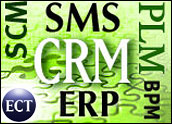
The CRM systems of many companies fail because they don’t properly manage the expectations of prospects and customers. What’s been missing is the ability to capture the moment of truth with every prospect or customer and then bring these insights into a broader mosaic of what the many segments of a customer base like, don’t like and expect from you.
In publicly-traded companies, these unmet expectations filter down to both investment and industry analysts, influencing stock price and valuation. As a result, what may seem like a distraction can mushroom into a set of market dynamics your CEO mentions in an earnings call when you don’t make your number.
Why do so many sales, marketing, operations and finance executives hate their CRM systems? Because all the data entered is great history, but it rarely predicts what will happen in the future. CRM systems in many companies read like James Joyce’s Ulysses, a stream-of-consciousness narrative.
If you don’t think this is true, open up your CRM system today, go to one of the top ten customers, and read through the entries. You’ll most likely find stream-of-consciousness entries and pasted e-mails. You have a perfect, rambling capture of the past, but very little for the future.
A Covenant
What’s missing is apparent at three levels.
First, at the logistical level, all those comments are gibberish to any analytics engine. While there are no doubt patterns in all those comments, deciphering them manually isn’t cost-justifiable. There are companies that decipher and build linguistic models from the data. One of them is Attensity, a company that has gained momentum in auto manufacturing, durable goods manufacturing and government by applying powerful linguistic analysis tools to unstructured content and presenting a summarized view. That’s invaluable for many companies, regardless of their core business.
Second, at the analytics level, think of the last time you were very angry with a company. Did you get a customer satisfaction questionnaire and meticulously fill in all the blanks? No! You just slammed out an e-mail, or maybe took the time to compose a great letter. What this means is that structured content captures the good and mediocre responses but rarely gets the most important: the processes causing your customers to be furious with you.
Third, linguistic models make it possible to predict the future. That’s because they give you a solid understanding of why customers love or hate you. Structured data robs you of the passion of your customers — unstructured, rambling text is invaluable to spotting where you excel and fail as a company.
Bottom Line
Within the unstructured content of millions of CRM systems is buried the valuable information that the systems were supposed to collect in the first place. Granted, there are call center, sales force automation, channel and partner relationship management, and even analytics applications that companies are happy with. For many companies, however, CRM systems are like the book you bought for the title alone and found to be disappointing. CRM as a concept sounds great, but often it fails to deliver what matters most: information about how you are fulfilling the expectations of customers.
Managing expectations means paying attention to what your customers are saying, and global companies simply do not have the time to read every comment. That’s why going after unstructured content will help predict your company’s financial performance — two, three or even four quarters from now. It’s time to start listening.
Louis Columbus, a CRM Buyer columnist, is a former senior analyst with AMR Research. He currently works in the software industry.




































